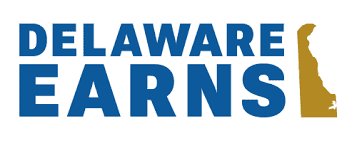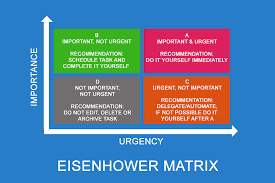NOV 2024, Vol 21, Issue 11
Overview
- Delaware Paid Leave Reminder
- Did Your Company Register for Delaware EARNS?
- How to Spot a Potential Leader
- Prioritize and Plan Your Work Using the Eisenhower Matrix
Delaware Paid Leave Reminder
If you are planning to use a private insurance plan instead of the Delaware Paid Leave plan to provide paid Family and Medical Leave benefits you must do so by December 1, 2025.
- - - -
Did Your Company Register for Delaware EARNS?
Delaware employers had until October 15, 2024, to register for Delaware EARNS, the “secure choice” program designed to provide workers and employers with access to low-cost retirement savings plans.
What needed to happen before October 15:
If you’re a private-sector employer with five or more W-2 employees (full- or part-time) and don’t offer a qualified retirement savings plan, you are required by law to offer Delaware EARNS.
If you already offer a retirement savings plan, you need to notify Delaware EARNS of your exemption.
If your business has fewer than five employees, you’re not required to participate but can choose to self-enroll in the program and let your employees know they can self-enroll also. To start the process, visit their website EARNSDelaware.com.
- - - -
How to Spot a Potential Leader
Here are six ways to spot a potential leader. Bench strength is very important at a company. Succession planning is more art than science, but you can figure out the difference between a great leader and a person who should just be a manager.
Here are six different ways to spot a great leader inside your organization:
Number one, they have followers. Now I know this sounds obvious, but it’s important, or as the Chinese proverb says, “If no one follows you, you’re not leading, you’re just taking a walk.” What you want to look at are specific metrics that indicate followership; for example, when a leader or a manager is getting a lot of transfer requests—they’re being called a poacher by everybody else in the organization—they’re almost always effective, not permissive. This is what I found out in my career. When you see that kind of metric, you know that that leader is a world-class leader that’s attracting people into their organization. Here’s another example. They have full attendance at all their meetings, especially of dotted-line and other executives. So that’s a good way of measuring a person who’s already demonstrated real leadership in the organization.
Second of all, they have a bias to action. They believe it’s okay to make mistakes, just make new ones. They don’t like to get stuck in the “-ing,” they want to live in the “-ed.” That’s something I learned from Tim Koogle, the first CEO at Yahoo. He taught me this from his days at Motorola. He says, “Don’t hang out with people who are studying, thinking about it, trying to do it, investigating it, because they’ll drag you down every time.” He said, “Hang out with the ‘-ed’s.’ The ‘-ed’ says, ‘We tried it. We executed it, and it failed.’” And that’s the kind of people you want to find in your organization, if you want to get things done.
Three, they’re better listeners than talkers. Talkers are a dime a dozen, but deep listeners that extract the right information at the right time and empower other people, those are the people that lead people forward.
Next, they focus on the problem, not the product. Your product idea is almost always wrong, and it’s your job to pivot, pivot, pivot, pivot until you find the right product that solves the problem, but the problem area doesn’t change, it just usually gets bigger and bigger, defining the market opportunity. Great leaders are obsessed about the problem and ambivalent about the product. That gives them the flexibility to succeed.
Fifth, great leaders have emotional talent. Stop picking people based on simple financial or technical talent. You’ll end up with people that melt down and chase away talent every single time. Look for a person that possesses emotional talent, which I define as emotional intelligence and generosity. When you find a person that’s sensitive to their emotions and can control them, they’re sensitive to the emotions in the room and can be empathetic towards them, that is a leader than can define reality, then give hope, what Napoleon Bonaparte defined as the ultimate role of the leader.
Finally, number six, great leaders demonstrate that they are multipliers, not diminishers. In her fantastic book Multipliers, author Liz Wiseman talks about this idea, that you can always tell the difference between a multiplier leader that grows and stretches her people and a diminisher that believes that she is the brain, and all of her direct reports are the hand. How can you spot them? They hoard. The diminishers always hoard resources because they don’t believe there’s enough to go around. They have that scarcity mindset. The diminisher manager is always hoarding respect: “I am the smartest person in the room.”
On the flipside, the multiplier learns to deal with less resources, challenges their people to exceed their expectations by 50%, and you can always spot their language. They say things like, “I want to hire people that are smarter than me and work for them some day.” That’s a person who can lead an organization forward.
- - - -
Prioritize and Plan Your Work Using the Eisenhower Matrix
A useful tool for prioritizing and planning your work is the Urgent-Important Matrix. This matrix, also called the Eisenhower Matrix, is a two-by-two framework. One axis is Importance: whether a task is important or not important. The other axis is Urgent: whether a task is urgent or not urgent.
The matrix creates four quadrants that provide excellent guidance in prioritizing your goals. Quadrant 1 also known as A is for tasks that are both urgent and important: deadlines that matter, or crises that need attention. You will usually need to prioritize Quadrant 1 tasks.
Quadrant 2 also known as B is for tasks that are important, but not urgent. These are the tasks that are most frequently ignored. It’s very easy to fall into the urgency trap; if everything is urgent, then it’s impossible to focus on important priorities. Pay close attention to the tasks in Quadrant 2.
Quadrant 3 also known as C is for tasks that are urgent, but not important. There are a surprising number of these: emails, calls, and meetings often fall into this quadrant. Be careful with Quadrant 3 tasks; ask yourself if they really need your immediate attention or if they can wait.
And Quadrant 4 also known as D tasks are the worst; they are neither urgent nor important. Some emails and calls fall into this category, as does most busy work. If they need to be performed at all, these tasks should be the lowest priority.
- - - -
Contact HR Strategies at 302.376.8595 or info@hrstrategies.org if you would like support or would like to learn more about the items in this newsletter. Please contact us if you would like to be added to our Monthly Strategies mailing list or if you would like for us to add someone to our mailing list.



